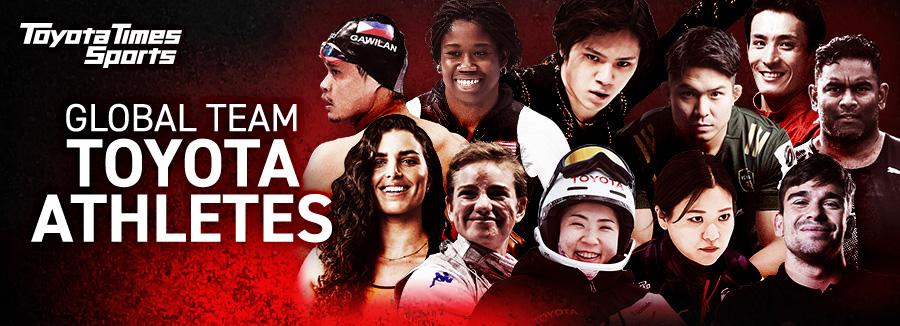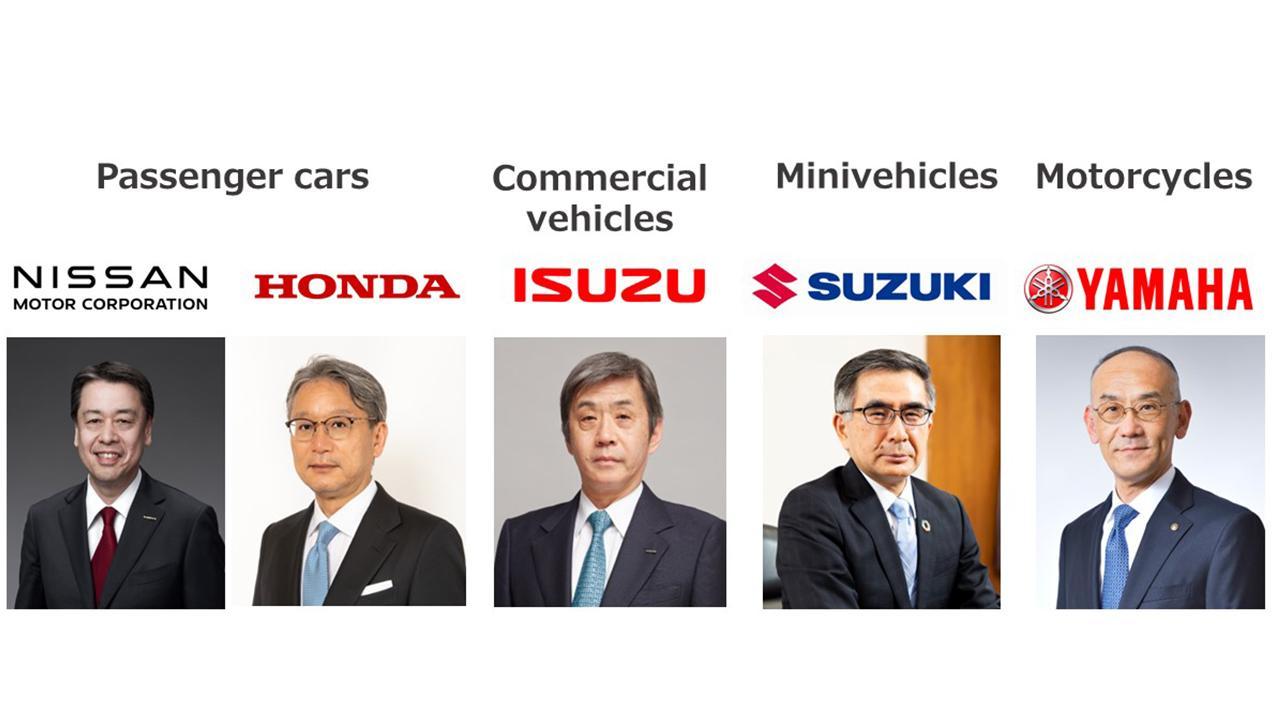
The word "cooperation" was repeated many times throughout a press conference announcing JAMA's new structure. Toyota Times zeros in on why there was so much emphasis on working together.

On November 18, the Japan Automobile Manufacturers Association (JAMA) held an online press briefing to introduce its new executive structure from May 2022. JAMA Vice Chairman Seiichi Nagatsuka kicked off the briefing with two announcements.
Vice Chairman Nagatsuka
The first announcement concerns the post of chairman. Chairman Toyoda’s term will be extended, meaning that our current chairman will be reappointed as our next chairman for a two-year term starting from next May.
The second announcement concerns the posts of our vice chairmen. Our three current vice chairmen, from Honda, Yamaha, and Isuzu, are to be joined by two new vice chairmen, one from Nissan and one from Suzuki. The candidates for the posts of vice chairmen are Honda President Mibe, Nissan President Uchida, Isuzu President Katayama, Suzuki President Suzuki, Yamaha President Hidaka, and me, Nagatsuka, of the JAMA secretariat. These are the matters that have been decided by the JAMA Board of Directors.
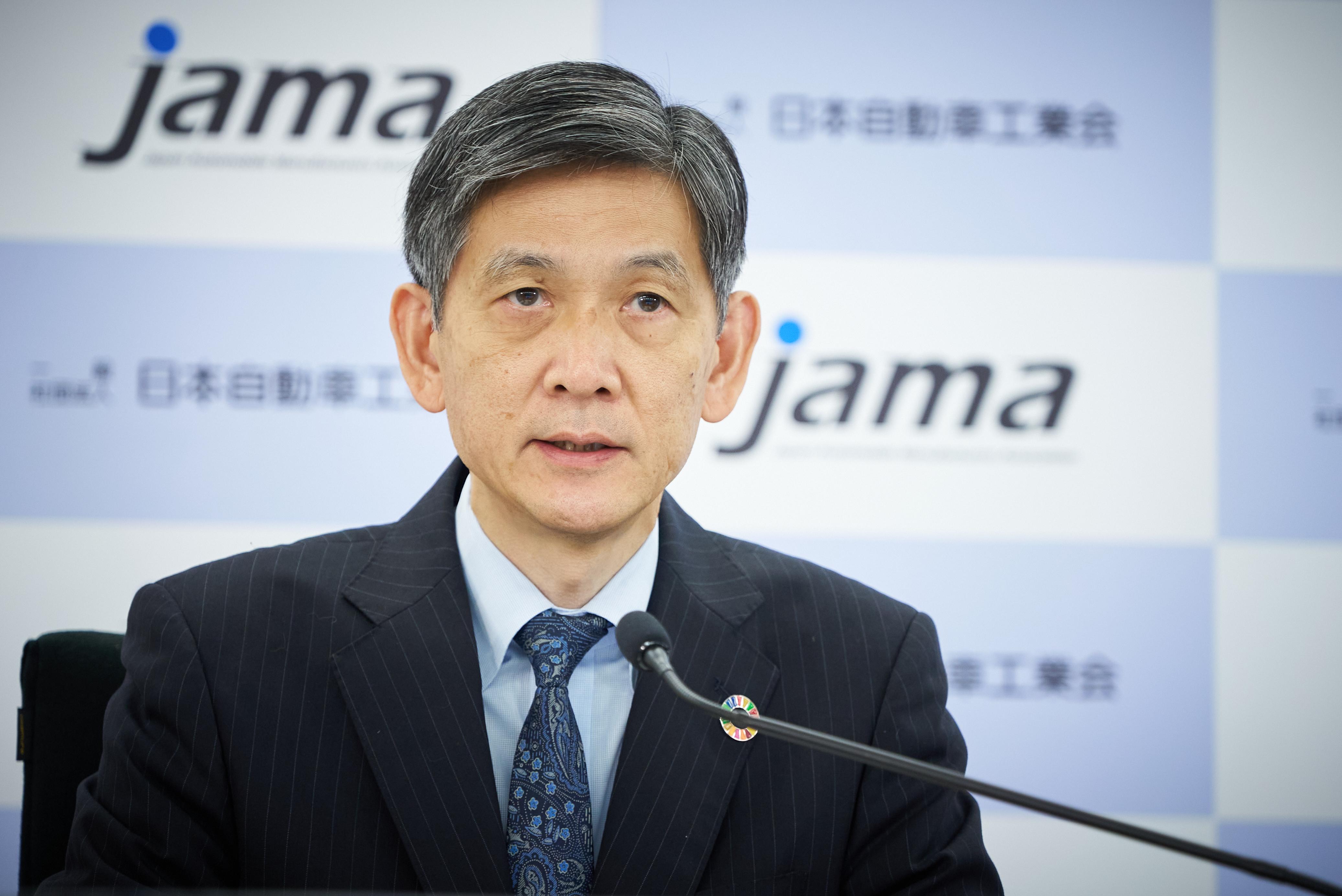
On stage at the briefing were Chairman Akio Toyoda, Vice Chairman Yoshihiro Hidaka (president of Yamaha Motor Co., Ltd.), Vice Chairman Masanori Katayama (president of Isuzu Motors Limited), Vice Chairman Seiichi Nagatsuka, as well as three people for whom it was announced would be vice chairmen from the next term—Honda Motor Co., Ltd. President Toshihiro Mibe, Nissan Motor Corporation President Makoto Uchida, and Suzuki Motor Corporation President Toshihiro Suzuki.
Taking an all-Japan approach
Following Nagatsuka’s opening remarks, Chairman Toyoda was the first to speak, and he talked about the aim of JAMA’s new executive structure and his thoughts on the extension of his term as chairman.
Chairman Toyoda
At today’s Board of Directors meeting, we decided on our executive structure for the next term.
At the core of this new organization is a belief that our automotive industry is an industry in which we can all work together. With this in mind, I, myself, have been involved in JAMA’s organizational reform and its responses to numerous crises.
Faced with the COVID-19 pandemic last year, we worked hard with our 5.5 million colleagues to ensure that automobiles would be the driving force behind economic recovery. I believe that the strength of the Japanese automotive industry is that it is a “full lineup” industry that has passenger cars, commercial vehicles, minivehicles, and motorcycles, backed by companies with excellent technologies in all genres.
However, amid such, each of those companies face unique challenges. For example, to disseminate CASE technologies and services, it will be important to start deployment through commercial vehicles. Also, to seriously strive to achieve carbon neutrality, it is essential to address minivehicles, which collectively support daily lives as the “people’s car” of Japan, and motorcycles, which enrich diversity in mobility.
There is a limit to what one company can do on its own. I believe that we are now in a time in which it is very important to move forward with cooperation among all of us.
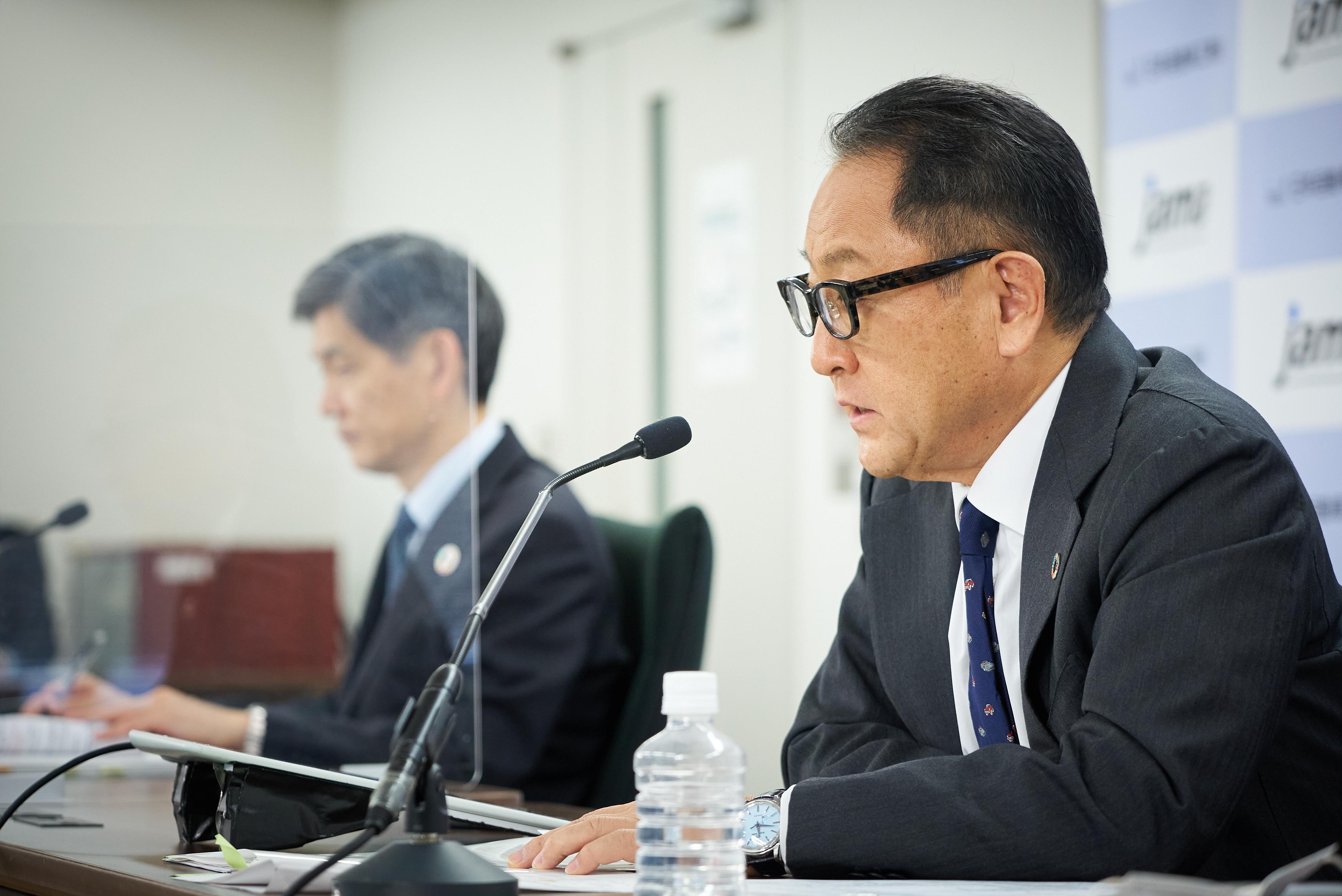
Thinking that I would like to see the people who know the most about their respective fields playing leading roles, last year I asked President Katayama of Isuzu, to represent commercial vehicles, and President Hidaka of Yamaha, to represent motorcycles, in roles as vice chairmen.
And this time, in addition to President Uchida of Nissan and President Mibe of Honda, President Suzuki of Suzuki has newly accepted the post of vice chairman as a representative of minivehicles. With this, I believe that we now have a structure for developing together with everyone a “full lineup” automotive industry
Although it was difficult to decide up until the very end whether I should accept the request to extend my term of office, our member companies voiced that they would like to continue under the same leader because we are in a time when major changes, such as striving to achieve carbon neutrality, are needed.
I have decided to accept an extension of my term in the hope that my own experience in dealing with crises might be useful in overcoming our current difficult situation. I will do my best for the future of the automotive industry and the future of Japan.
I humbly request your continued support of our automotive industry as we move forward together.
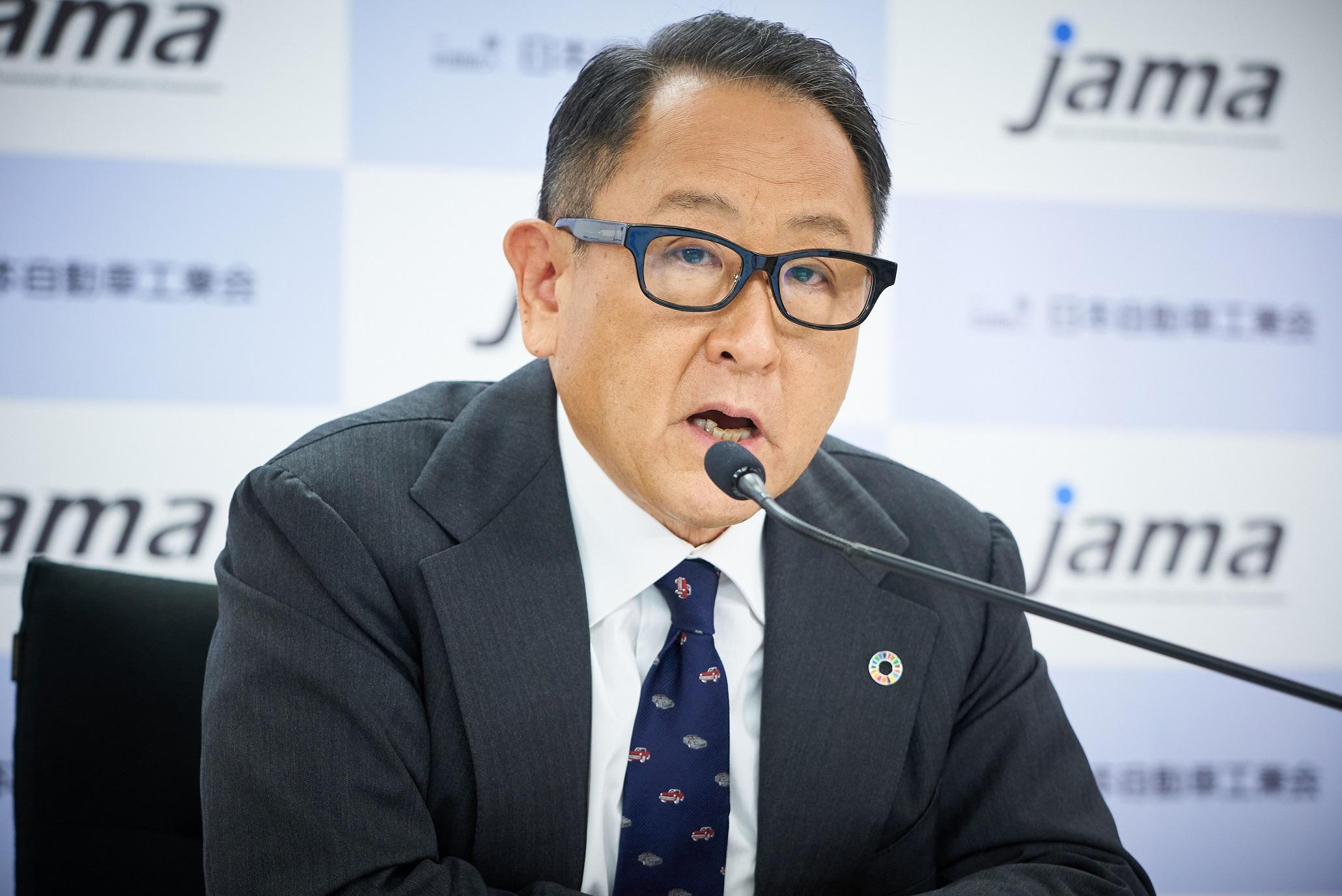
The significance of cooperation as viewed by the vice chairmen
Next, the vice chairmen shared their enthusiasm. In doing so, they voiced in common the importance of moving toward the future based on cooperation.
Vice Chairman Hidaka from Yamaha
In this era of profound transformation, such as with the advent of CASE and initiatives for achieving carbon neutrality, we are facing many challenges that must be addressed by the whole of Japanese industry.
The motorcycle industry is a global business in which Japanese brands account for about half of the approximately 63 million units in the annual global market. Like the automotive industry, it is a Japanese industry that has competitive strengths, even on the world stage.
We will continue to do our utmost to meet the diverse mobility needs of people by maintaining this competitiveness and responding with our colleagues in the motorcycle industry as well as with those in the automotive industry to the major challenges we now face.
Vice Chairman Katayama from Isuzu
With an overwhelming sense of ownership and a sense of cooperation for resolving social issues, our four heavy-duty vehicle manufacturers have had repeated discussions on firmly fulfilling our social responsibilities, such as the provision of safety and protecting the environment, through our truck and bus products, which form part of the social infrastructure that supports daily life.
With our new executive structure, we are determined to work together with a stronger-than-ever “all Japan” stance and achieve greater innovation.
Incoming Vice Chairman Mibe from Honda
Earlier, Chairman Toyoda mentioned that the Japanese automotive industry’s strength is that it is a “full lineup” industry backed by companies with excellent technologies in each genre. I believe that carbon neutrality is a theme that needs to be addressed by maximizing our full lineup of diversified technologies and approaches undergoing research and development, as well as by maximizing the strengths of each company and field.
We—not only automobile manufacturers, but the entire automotive industry as a whole—will play a leading role in striving with a sense of speed and by leveraging our respective areas of expertise to achieve the very challenging goal of realizing carbon neutrality by 2050.
It very much encourages me that Chairman Toyoda, who has demonstrated strong leadership in resolutely transforming JAMA and bringing the industry together, will continue as chairman. Also, as a vice chairman, I will work hard with others to respond to JAMA’s desire for our industry to be united in making it through this era of profound transformation, which includes among others achieving carbon neutrality.
Incoming Vice Chairman Uchida from Nissan
The strength of the Japanese automobile industry lies in its ability to produce innovative ideas that create new value and in the high level of technology that makes such ideas possible. Each company has thus far grown and developed through friendly competition, making the most of their individuality.
On the other hand, the business environment surrounding us will drastically change going forward. I believe that it is important in such times for each of us to continue to improve our separate capabilities and assume a stance for transcending corporate boundaries to face common challenges together.
I look forward to lending a hand as we work together to rally the Japanese automotive industry and increase Japan’s presence in the world.
Incoming Vice Chairman Suzuki from Suzuki
I am extremely happy that a vice chairman has been chosen from the category of minivehicles, as it signifies the high expectations placed on minivehicles in this country. At the same time, I feel a great sense of responsibility.
Collectively as “the people’s car”, minivehicles not only support people’s daily lives but are also expected to contribute to the achievement of carbon neutrality as a form of mobility that can support the last mile of logistics. I look forward to working together with all JAMA members to make proposals and take actions not only for vehicles but also for infrastructure development to achieve carbon neutrality.
How the new structure came to be
A Q&A session followed in which a reporter asked what kind of discussions led to the new system.
Vice Chairman Katayama
First of all, the challenges faced by JAMA and its member companies are, for sure, now changing. When considering how to take on these challenges, our member companies were united in opinion and we decided that we would like to ask Chairman Toyoda to continue in his post.
Taking into consideration the challenges for which we need to take action, the result of our discussions was that a full lineup of large vehicles, minivehicles, and motorcycles, plus having Nissan and Honda, would be the best structure.
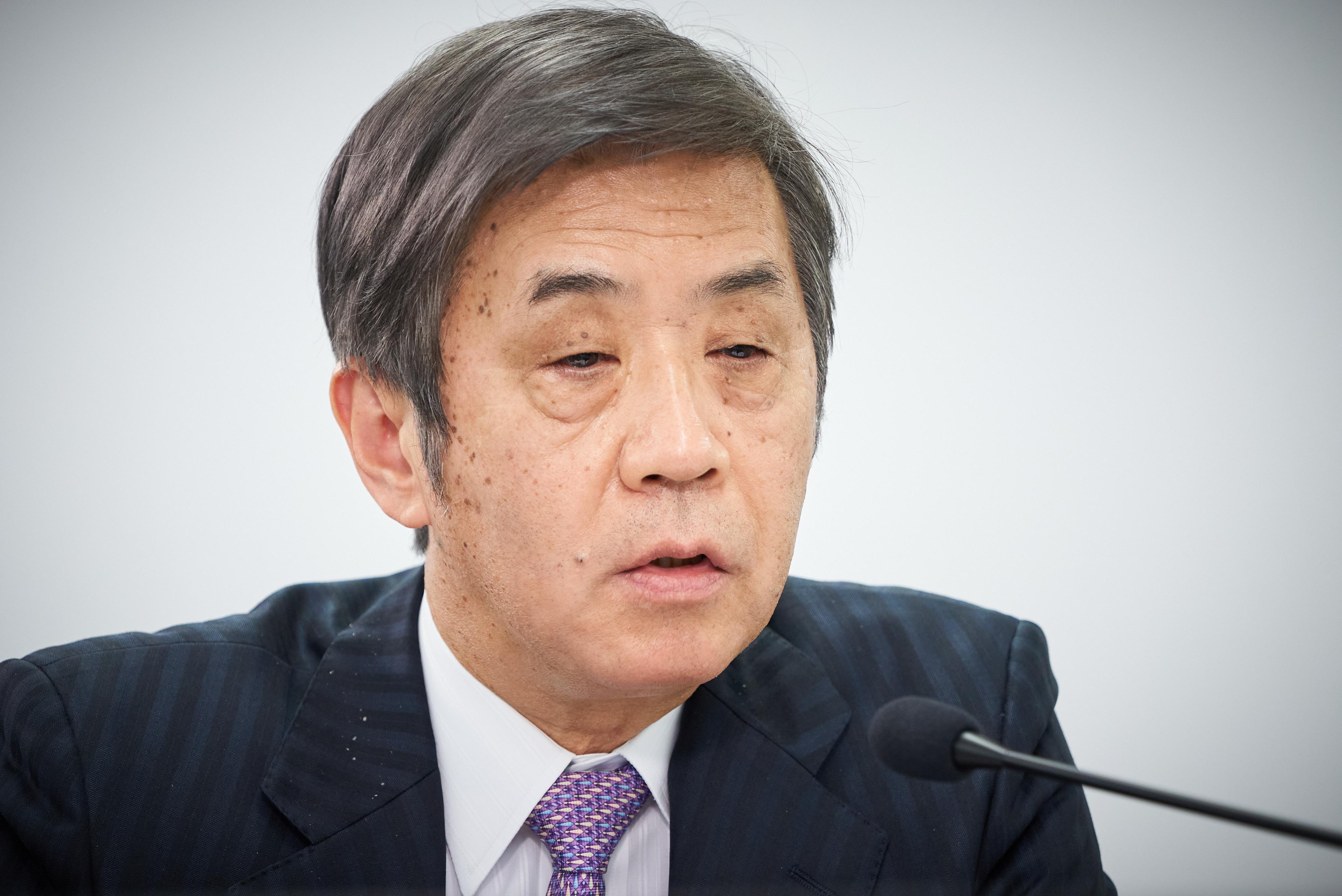
After that, Vice Chairman Hidaka also revealed the following.
Vice Chairman Hidaka
The challenges we are facing now, such as carbon neutrality and CASE, present extremely high hurdles, and each country and region around the world applies various policies to their own advantage for political reasons.
In such a situation, when we think about how to maintain a competitive automotive industry, we would not be able to compete with trends starting in Europe if each of our companies took a separate approach. The question was whether JAMA could truly work as a team while clarifying areas of cooperation.
For that, Chairman Toyoda created a forum for us to discuss whether JAMA was an organization of bitter rivals having to share the same boat or whether we could compete as one team with clearly defined areas of cooperation. The chairperson and vice chairmen presenting here today gathered beforehand to discuss whether we can honestly work together as a team.
The chairman and the seven vice chairmen have ventured to today’s press conference with a firm determination to compete under the flag of Japan by working together in areas of cooperation.
What will change?
Next, the newly appointed vice chairmen enthusiastically spoke about what they would like to change and how under the new structure.
Incoming Vice Chairman Uchida
I believe that Japan has very excellent technologies. But I feel that it has lacked a sense of speed when it comes to turning those technologies into businesses and something tangible.
Using this as an opportunity, we will turn these technologies into businesses and make Japan even more competitive. I think it is very important to work together with everyone here. Different countries are moving toward carbon neutrality at completely different speeds. Finding ways to strengthen Japan’s businesses and industries is an urgent matter. I would like to strive to build up our strength by exchanging various opinions under our new structure.
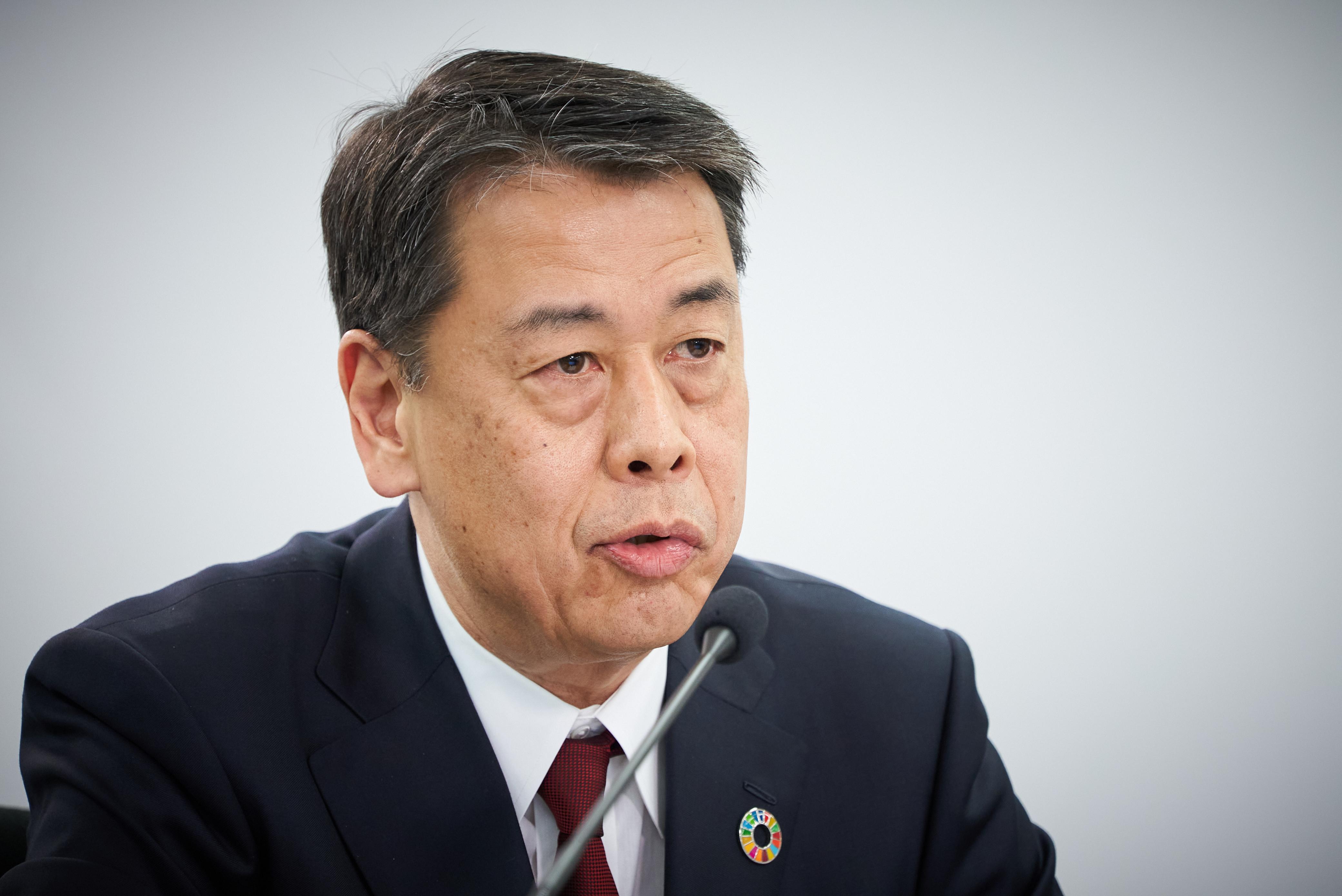
Incoming Vice Chairman Mibe expressed his enthusiasm, saying that the achievement of carbon neutrality is not limited to the realm of cars and motorcycles but also includes changing the entire social structure, such as by making cities smarter. Incoming Vice Chairman Suzuki, representing the minivehicle industry, said: “The ‘small & light’ characteristic of minivehicles will be necessary for the society of the future. From now we are in an age in which customers can wisely choose and use mobility depending on the intended usage”, expressing his desire to further enhance the convenience of minivehicles, which support Japanese lifestyles, by way of cooperation.
The press conference announcing JAMA’s new structure presented JAMA more than ever as “one team” poised to take on the hardships now and ahead, leaving the impression that the Japanese automotive industry strongly desires to continue to work together.

